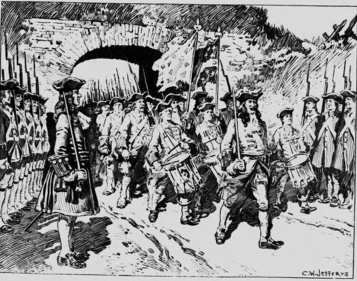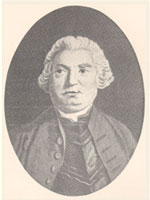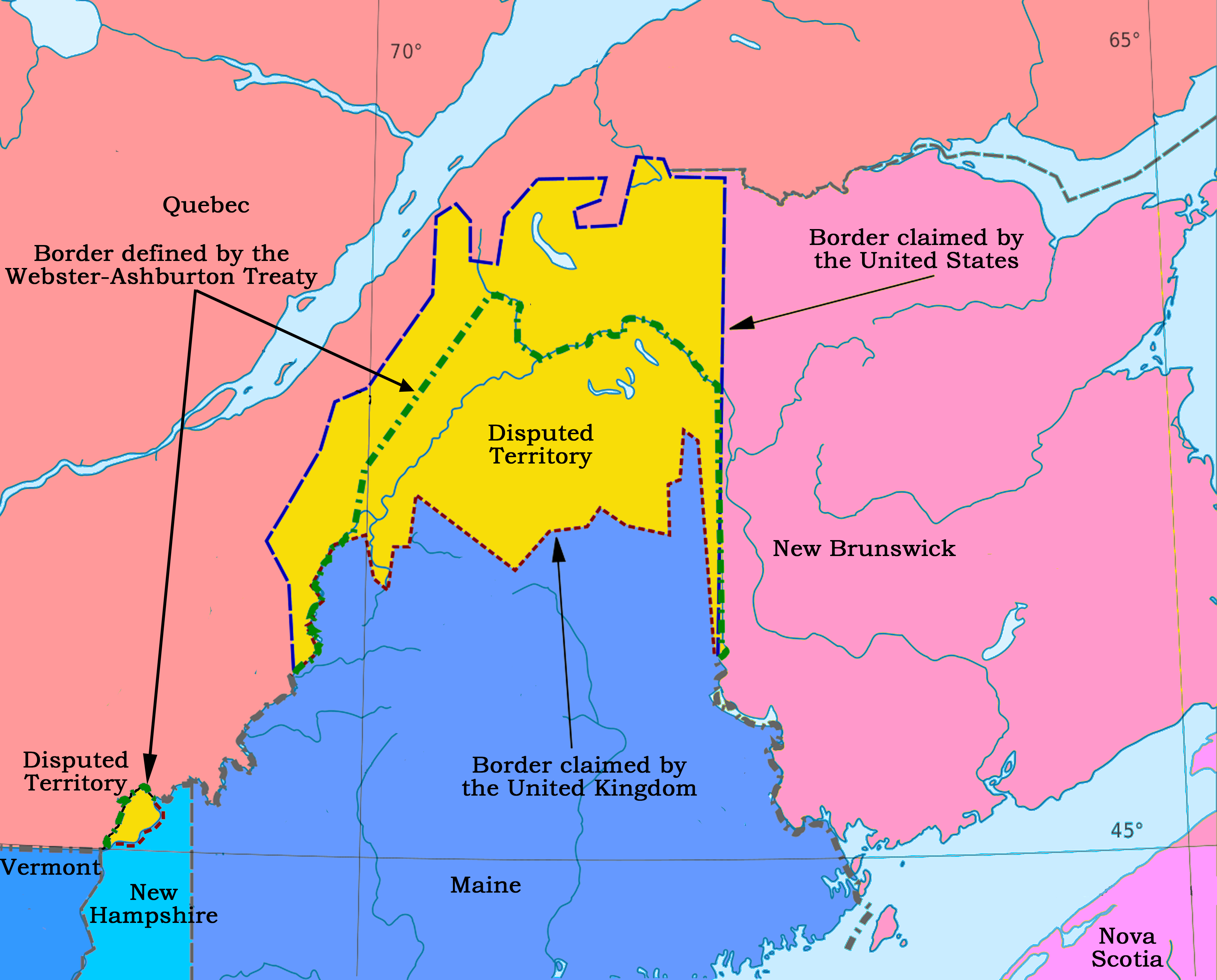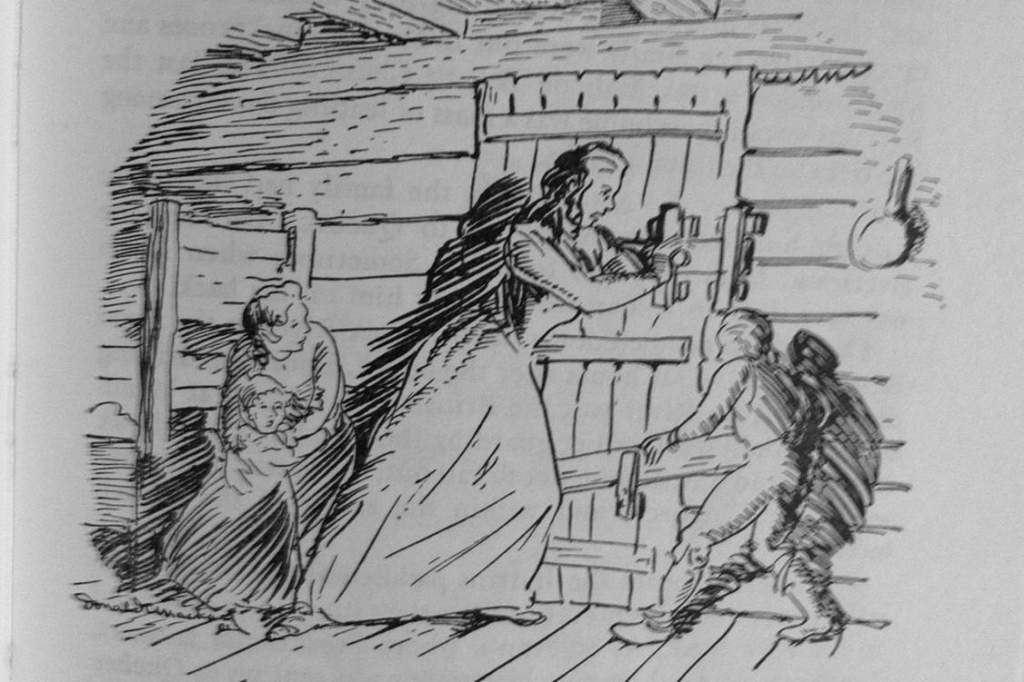|
Burying The Hatchet Ceremony (Nova Scotia)
The Burying the Hatchet ceremony (also known as the Governor's Farm ceremony) happened in Nova Scotia on June 25, 1761 and was one of many such ceremonies in which the Halifax Treaties were signed. The treaties ended a protracted period of warfare which had lasted more than 75 years and encompassed six wars between the Mi'kmaq people and the British. The Burying the Hatchet ceremonies and the treaties that they commemorated created an enduring peace and a commitment to obey the rule of law. Many of British commitments were not delivered despite the intentions of the British dignitaries who attended the ceremony and helped draft the treaty such as the right afforded to the Mi'kmaq to become British subjects. The treaties were enshrined into the Canadian Constitution in 1982, and there have since been numerous judicial decisions that have upheld them in the Canadian Supreme Court, the most recognized On being the Donald Marshall case. Nova Scotians celebrate the Treaties of 1760 ... [...More Info...] [...Related Items...] OR: [Wikipedia] [Google] [Baidu] [Amazon] |
Nova Scotia
Nova Scotia is a Provinces and territories of Canada, province of Canada, located on its east coast. It is one of the three Maritime Canada, Maritime provinces and Population of Canada by province and territory, most populous province in Atlantic Canada, with an estimated population of over 1 million as of 2024; it is also the second-most densely populated province in Canada, and second-smallest province by area. The province comprises the Nova Scotia peninsula and Cape Breton Island, as well as 3,800 other coastal islands. The province is connected to the rest of Canada by the Isthmus of Chignecto, on which the province's land border with New Brunswick is located. Nova Scotia's Capital city, capital and largest municipality is Halifax, Nova Scotia, Halifax, which is home to over 45% of the province's population as of the 2021 Canadian census, 2021 census. Halifax is the List of census metropolitan areas and agglomerations in Canada, twelfth-largest census metropolitan area in ... [...More Info...] [...Related Items...] OR: [Wikipedia] [Google] [Baidu] [Amazon] |
Father Le Loutre's War
Father Le Loutre's War (1749–1755), also known as the Indian War, the Mi'kmaq War and the Anglo-Mi'kmaq War, took place between King George's War and the French and Indian War in Acadia and Nova Scotia. On one side of the conflict, the Kingdom of Great Britain, British and New England Colonies, New England colonists were led by British officer Charles Lawrence (British Army officer), Charles Lawrence and New England United States Army Ranger#Colonial Period, Ranger John Gorham (military officer), John Gorham. On the other side, Father Jean-Louis Le Loutre led the Mi'kmaq and the Military history of the Acadians, Acadia militia in guerrilla warfare against settlers and British forces. At the outbreak of the war there were an estimated 2500 Mi'kmaq and 12,000 Acadians in the region. While the British Siege of Port Royal (1710), captured Port Royal in 1710 and were ceded peninsular Acadia in 1713, the Mi'kmaq and Acadians continued to contain the British in settlements at Port-Ro ... [...More Info...] [...Related Items...] OR: [Wikipedia] [Google] [Baidu] [Amazon] |
Acadians
The Acadians (; , ) are an ethnic group descended from the French colonial empire, French who settled in the New France colony of Acadia during the 17th and 18th centuries. Today, most descendants of Acadians live in either the Northern American Acadia (region), region of Acadia, where descendants of Acadians who escaped the Expulsion of the Acadians (a.k.a. The Great Upheaval / ''Le Grand Dérangement'') re-settled, or in Louisiana, where thousands of Acadians moved in the late 1700s. Descendants of the Louisiana Acadians are most commonly known as Cajuns, the anglicized term of "Acadian". Acadia was one of the five regions of New France, located in what is now Eastern Canada's The Maritimes, Maritime provinces, as well as parts of Quebec and present-day Maine to the Kennebec River. It was ethnically, geographically and administratively different from the other French colonies such as the Canada (New France), French colony of Canada. As a result, the Acadians developed a dist ... [...More Info...] [...Related Items...] OR: [Wikipedia] [Google] [Baidu] [Amazon] |
Catholic
The Catholic Church (), also known as the Roman Catholic Church, is the List of Christian denominations by number of members, largest Christian church, with 1.27 to 1.41 billion baptized Catholics Catholic Church by country, worldwide as of 2025. It is among the world's oldest and largest international institutions and has played a prominent role in the history and development of Western civilization.Gerald O'Collins, O'Collins, p. v (preface). The church consists of 24 Catholic particular churches and liturgical rites#Churches, ''sui iuris'' (autonomous) churches, including the Latin Church and 23 Eastern Catholic Churches, which comprise almost 3,500 dioceses and Eparchy, eparchies List of Catholic dioceses (structured view), around the world, each overseen by one or more Bishops in the Catholic Church, bishops. The pope, who is the bishop of Rome, is the Papal supremacy, chief pastor of the church. The core beliefs of Catholicism are found in the Nicene Creed. The ... [...More Info...] [...Related Items...] OR: [Wikipedia] [Google] [Baidu] [Amazon] |
Charles Lawrence (British Army Officer)
Brigadier-General Charles Lawrence (14 December 1709 – 19 October 1760) was a British military officer who, as lieutenant governor and subsequently governor of Nova Scotia, is perhaps best known for overseeing the Expulsion of the Acadians and settling the New England Planters in Nova Scotia. He was born in Plymouth, England, and died in History of Halifax (former city), Halifax, Nova Scotia. According to historian Elizabeth Griffiths, Lawrence was seen as a "competent", "efficient" officer with a "service record that had earned him fairly rapid promotion, a person of considerable administrative talent who was trusted by both Cornwallis and Hopson." He is buried in the crypt of St. Paul's Church (Halifax). Early career Lawrence was born in Plymouth (Devon) on 14 December 1709. He followed his father, General Charles John Lawrence, who is said to have served in Flanders under John Churchill, 1st Duke of Marlborough, into a military career. Charles Lawrence's earlier life ... [...More Info...] [...Related Items...] OR: [Wikipedia] [Google] [Baidu] [Amazon] |
Pierre Maillard
Abbé Pierre Antoine Simon Maillard (c. 1710 – 12 August 1762) was a French-born priest. He is noted for his contributions to the creation of a writing system for the Mi'kmaq people of Île Royale, New France (now Cape Breton Island, Canada). He is also credited with helping negotiate a peace treaty between the British and the Mi'kmaq that resulted in the Burying the Hatchet ceremony (Nova Scotia). He was the first Catholic priest in Halifax, Nova Scotia, and is buried in the St. Peter's Cemetery, in Downtown Halifax. Early life and career Maillard was born in the diocese of Chartres, France, around 1710. He received his ecclesiastical training at the Séminaire de Saint-Esprit, in Paris. In 1734, the Abbé de L'Isle-Dieu selected Maillard in a group of seminarists lent to the Séminaire des Missions Étrangeres, which was short of personnel. After eight months in that institution, Maillard was selected in 1735 for the Mi'kmaq missions on Île Royale (now Cape Breton Islan ... [...More Info...] [...Related Items...] OR: [Wikipedia] [Google] [Baidu] [Amazon] |
Saint John River (Bay Of Fundy)
The Saint John River (; Maliseet-Passamaquoddy: ''Wolastoq'') is a river flowing within the Dawnland region from headwaters in the Notre Dame Mountains near the Maine-Quebec border through western New Brunswick to the northwest shore of the Bay of Fundy. Eastern Canada's longest river, its drainage basin is one of the largest on the east coast at about . This “River of the Good Wave” and its tributary drainage basin formed the territorial countries of the Wolastoqiyik and Passamaquoddy First Nations (named Wolastokuk and Peskotomuhkatik, respectively) prior to European colonization, and it remains a cultural centre of the Wabanaki Confederacy to this day. The Webster–Ashburton Treaty following the Aroostook War established a border between New Brunswick and Maine following of the river, while a tributary forms of the border between Quebec and Maine. Maine communities along the river include Fort Kent, Madawaska, and Van Buren. New Brunswick settlements through ... [...More Info...] [...Related Items...] OR: [Wikipedia] [Google] [Baidu] [Amazon] |
Battle Of The Thousand Islands
The Battle of the Thousand Islands was an engagement fought on 16–24 August 1760, in the upper St. Lawrence River, among the Thousand Islands, along the present day Canada–United States border, by British and French forces during the closing phases of the Seven Years' War, as it is called in Canada and Europe, or the French and Indian War as it is referred to in the United States. The engagement took place at Fort Lévis (about one mile (1.6 km) downstream from the modern Ogdensburg, New York, Ogdensburg–Prescott, Ontario, Prescott International Bridge), Pointe au Baril (present-day Maitland, United Counties of Leeds and Grenville, Ontario, Maitland, Ontario), and the surrounding waters and islands during the Montreal Campaign. The small French garrison at Fort Lévis held the much larger British army at bay for over a week, managing to sink two British warships and to cripple a third. Their resistance delayed the British advance to Montreal from the west. Background ... [...More Info...] [...Related Items...] OR: [Wikipedia] [Google] [Baidu] [Amazon] |
Battle Of The Plains Of Abraham
The Battle of the Plains of Abraham, also known as the Battle of Quebec (), was a pivotal battle in the Seven Years' War (referred to as the French and Indian War to describe the North American theatre). The battle, which took place on 13 September 1759, was fought on a plateau by the British Army and Royal Navy against the French Army, just outside the walls of Quebec City on land that was originally owned by a farmer named Abraham Martin, hence the name of the battle. The battle involved fewer than 10,000 troops in total, but proved to be a deciding moment in the conflict between France and Britain over the fate of New France, influencing the later creation of Canada. The culmination of a three-month siege by the British, the battle lasted about an hour. British troops commanded by General James Wolfe successfully resisted the Column (formation), column advance of French troops and Canada (New France), Canadian militia under General Louis-Joseph de Montcalm, Louis-Joseph, Ma ... [...More Info...] [...Related Items...] OR: [Wikipedia] [Google] [Baidu] [Amazon] |
Siege Of Louisbourg (1758)
The siege of Louisbourg was a pivotal operation of the French and Indian War in 1758 that ended French colonial dominance in Atlantic Canada and led to the subsequent British campaign to capture Quebec in 1759 and the remainder of New France the following year. Background The British government realized that with the Fortress of Louisbourg under French control, the Royal Navy could not sail up the St. Lawrence River unmolested for an attack on Quebec. After an expedition against Louisbourg in 1757 led by Lord Loudon was turned back due to a strong French naval deployment, the British under the leadership of William Pitt resolved to try again with new commanders. Pitt assigned the task of capturing the fortress to Major General Jeffery Amherst. Amherst's brigadiers were Charles Lawrence, James Wolfe and Edward Whitmore, and command of naval operations was assigned to Admiral Edward Boscawen. The chief engineer was John Henry Bastide who had been present at the first ... [...More Info...] [...Related Items...] OR: [Wikipedia] [Google] [Baidu] [Amazon] |
Raid On Lunenburg (1756)
The Raid on Lunenburg occurred during the French and Indian War when Indigenous forces attacked a British settlement at Lunenburg, Nova Scotia on May 8, 1756. The indigenous forces raided two islands on the northern outskirts of the fortified Township of Lunenburg, Rous Island and Payzant Island (present-day Covey Island). The raiding party killed five settlers and took five prisoners. This raid was the first of nine that the Indigenous and Acadian forces conducted against the Lunenburg peninsula over the next three years of the war. The Indigenous forces took John Payzant and Lewis Payzant prisoner, both of whom left captivity narratives of their experiences. Historical context The first recorded Indigenous forces attack in the region happened during King George's War on the La Have river. The forces killed seven English crew members on a vessel that went ashore. The scalps were taken to Joseph Marin de la Malgue at Louisbourg. Father Le Loutre's War began when Edward ... [...More Info...] [...Related Items...] OR: [Wikipedia] [Google] [Baidu] [Amazon] |
Expulsion Of The Acadians
The Expulsion of the Acadians was the forced removal of inhabitants of the North American region historically known as Acadia between 1755 and 1764 by Great Britain. It included the modern Canadian Maritime provinces of Nova Scotia, New Brunswick, and Prince Edward Island, along with part of the US state of Maine. The expulsion occurred during the French and Indian War, the North American theatre of the Seven Years' War. Prior to 1758, Acadians were deported to the Thirteen Colonies, then later transported to either Britain or France. Of an estimated 14,100 Acadians, approximately 11,500 were deported, of whom 5,000 died of disease, starvation or shipwrecks. Their land was given to settlers loyal to Britain, mostly immigrants from New England and Scotland. The event is largely regarded as a crime against humanity, though the modern-day use of the term "genocide" is debated by scholars. According to a 1764 census, 2,600 Acadians remained in Nova Scotia at that time, having e ... [...More Info...] [...Related Items...] OR: [Wikipedia] [Google] [Baidu] [Amazon] |









